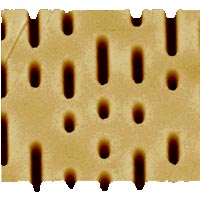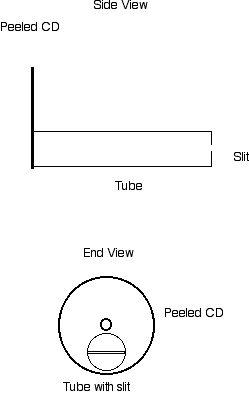
The pits on a CD are organized into lines that are 1.6 micrometers (1.6 x 10^-6m apart.
Peel a CD
Introduction
The metal layer can be easily removed from some cheap recordable compact disks, the compact disk then becomes a difraction grating.
Material
Find a cheap compact disk (we use GQ recordable CD's which we buy at Fry's Electronics.)
Various light sources, ee.g. flashlights, fluorescent lights. Small points of light make the best sources. However, a line of light such as fluorescent tube can make a good spectrum if it is oriented parallel to the radial lines on the CD.
Assembly
Use a knife to cut a radial line through the label of the CD, peel the label off the CD.
You can also cut around the outside and inside rims of the label.
To Do and Notice
Look through the compact disk at the light sources.
Notice the spectrum of the source spread along a radial line.(Radial with respect to the compact disk.)
What's Going On?
A compact disk has a line of pits that spiral from the edge to the center.

The lines of pits act as a diffraction grating which diffracts different colors of light,that is, different wavelengths of light, to different angles.
So light from a small source will be separated into its component colors.
Going Further
The peeled CD can be used as the diffraction grating in a spectrometer.

|
Scientific Explorations with Paul Doherty |
|
18 August 2005 |